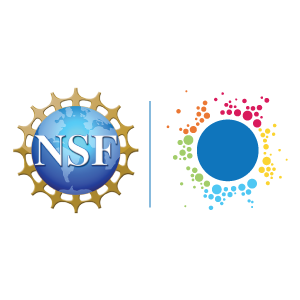The NSF INCLUDES Coordination Hub aims to promote the success of INCLUDES Network members and elevate expertise. As part of this aim, we are featuring the important work of those in the INCLUDES Network through project spotlights. This post highlights the Leadership and iSTEAM for Females in Elementary School (LiFE) project.
Special thanks to the project’s co-principal investigators, Bruce Bukiet, Nancy Steffen-Fluhr, James Lipuma, for sharing their important work.
The LiFE project offers support and encouragement for girls at an early age to participate in STEM experiences in a safe, collaborative environment and build skills as an on ramp to participation in STEM and to attain future success. We use solutions-based learning, innovation, research and design showcases, and integrated science, technology, engineering, arts and mathematics (iSTEAM) activities to engage and sustain elementary school girls’ interest in STEM. This hands-on integrated approach, coupled with near-peer mentoring and exposure to exciting role models, provides a scalable strategy for helping girls pursue opportunities for a successful future in STEM.
LiFE works with schools to develop girls STEM clubs and is building a network of mentors and role models to assist the clubs. LiFE partners with public and private organizations, such as Apple Corporation and US Army, to host events where club members can showcase their progress and products. LiFE employs a collective impact approach to leverage the expertise of all stakeholders, foster a sense of community, and disseminate project activities and results in a curated digital playbook. The playbook contains research-based best practices for teaching STEM and promoting transdisciplinary skills.
Examples of Our Work

In each of our participating clubs, girls work on single session and multi-session hands-on projects that allow for exploration, teamwork, and problem solving. Projects vary by grade and school as desired by the teachers leading the clubs. Projects have included building the tallest structure with pipe cleaners and a structure that can hold the most weight using index cards, and exploring electronics using Snap Circuits. The girls designed and constructed towers, bridges, balloon boats, catapults, rubber band cars, and water slides.
The girls met each other and shared their projects at our Pi Day event that brought together nearly 200 elementary school girls. After participating iniSTEAM activities led by New Jersey Institute of Technology faculty, the girls in our clubs presented their work with PowerPoints, posters, and hands-on activities to the other girls in LiFE clubs and to girls from several schools invited to join us that day.

Our Approach
By using a collective impact approach, we promote the sharing of ideas and perspectives of all stakeholders, especially those involved in day-to-day contact with the students. This approach led to one teacher suggesting a professional development event on engineering design at Liberty Science Center. We funded all the teachers’ participation in the experience. The grant also funded supplies specifically desired by the individual clubs. In addition, by focusing on such ideas as having the girls explore in a safe environment, work in teams, and showcase their work, LiFE helps girls build transdisciplinary skills while incorporating aspects that sustain girls’ interest in STEM.
By bringing in corporate and government partners and connecting the girls with STEM role models, we build the foundations for a successful STEM future among club members.

As the leads of the project and backbone, we encourage sharing of ideas and feedback from and dissemination among all stakeholders—district and school leadership, teachers, and NJIT personnel involved with the project. We manage group communications, and support clubs with resources, supplies, mentors, and role models. We coordinate professional development for LiFE’s educators as well as events and showcases. To grow the project, we develop relationships with other districts and organizations interested in promoting STEM. We also engage in long-range planning to set the direction of future efforts and encourage sustainability.
Why we do what we do
We are passionate about the importance of having a well-educated workforce that values and is conversant in STEM, and has the transdisciplinary skills so important for success in today’s workforce and society. We are inspired by the excitement, interest, and engagement of the children involved in our clubs as well as by the enthusiasm and appreciation of the teachers. As the community we have built evolves, it only furthers our confidence that our efforts to affectpeoples’ lives will bear fruit and improve our communities.

LiFE serves as a model for engaging all students in STEM, especially women, throughout their path towards a STEM career. We have demonstrated that students respond to the activities and events, and so educators, parents, and community members interested in the progress and prosperity of our world should have an interest in our work. By developing a playbook of best practices to establish and expand STEM clubs, our efforts can be replicated throughout the country while being customized for the specifics of any community. By building on LiFE and developing partnerships, we plan to build the STEM for Success Alliance (www.STEMforSuccess.org) that will enhance participation of women and other underrepresented groups in STEM from the early grades through college and career.

